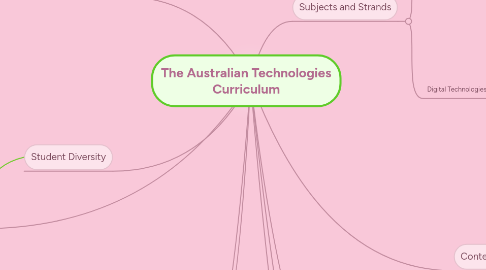
1. Student Diversity
2. ACARA is committed to the development of a high-quality curriculum for all Australian students that promotes excellence and equity in education. All students are entitled to rigorous, relevant and engaging learning programs drawn from the Australian Curriculum: Technologies. Teachers take account of the range of their students’ current levels of learning, strengths, goals and interests and make adjustments where necessary (ACARA, 2013).
2.1. Students with a disability
2.2. English as an additional language
2.3. Gifted and Talented Students
3. Achievement standards
3.1. Achievement standards indicate the quality of learning that students should typically demonstrate at a particular stage in their schooling. Achievement standards will be accompanied by portfolios of annotated student work samples that illustrate the expected learning and these portfolios then help teachers to make judgments about whether the students have achieved the standard.
4. Band Levels
4.1. The Band level descriptions are grouped to provide an insight of the content which is to be taught at each level.
4.1.1. Foundation to Year 2
4.1.2. Year 3 and 4
4.1.3. Year 5 and 6
4.1.4. Year 7 and 8
4.1.5. Year 9 and 10
5. Curriculum Aims and Objectives:
5.1. The Australian Curriculum: Technologies aims to develop the knowledge, understanding and skills to ensure that, individually and collaboratively, students:
5.2. • are creative, innovative and enterprising when using traditional, contemporary and emerging technologies, and understand how technologies have developed over time
5.3. • effectively and responsibly select and manipulate appropriate technologies, resources, materials, data, systems, tools and equipment when designing and creating products, services, environments and digital solutions
5.4. • critique and evaluate technologies processes to identify and create solutions to a range of problems or opportunities
5.5. • investigate, design, plan, manage, create, produce and evaluate technologies solutions
5.6. • engage confidently with technologies and make informed, ethical and sustainable decisions about technologies for preferred futures including personal health and wellbeing, recreation, everyday life, the world of work and enterprise, and the environment.
6. Content descriptors:
6.1. For students to describe and demonstrate the knowledge, understanding and skills that teachers are expected to teach and assess, and the students are expected to learn and understand.
7. Content Elaborations
7.1. Content elaborations are provided for Foundation to Year 10 as support material to illustrate and exemplify what is to be taught and to assist teachers in developing a shared understanding of the content descriptions. They are not intended to be comprehensive content points that all students need to be taught nor do they encompass every aspect of a content description.
8. General capabilities:
8.1. In the Australian Curriculum, the general capabilities encompass the knowledge, skills, Behaviours and dispositions that, together with curriculum content in each learning area and the cross-curriculum priorities will assist students to live and work successfully in the twenty-first century.
8.1.1. There are seven general capabilities: Literacy (LIT) Numeracy (NUM) Information and communication technology capability (ICT) Critical and creative thinking (CCT) Personal and social capability (PSC) Ethical understanding (EU) Intercultural understanding (ICU)
9. Cross Curriculum Priorities: There are three cross curriculum priorities which are embedded in the curriculum and have a strong varying presence depending on their relevance to each of the learning areas.
9.1. Asia and Australia's engagement with Asia
9.2. Aboriginal and Torres Strait Islander
9.3. Sustainability
10. Subjects and Strands
10.1. Design and Technologies
10.1.1. Knowledge and Understanding
10.1.1.1. Taking into account: social, economic, environmental, ethical, legal, aesthetic and functional factor and the impact if technologies on individual families, local, regional and global communities, the economy and the environment.
10.1.2. Process and Production Skills
10.1.2.1. - Critiquing, exploring and investigation - General, developing and evaluating ideas - Planning, producing and evaluating designed solutions
10.1.3. Key concepts and ideas
10.1.3.1. - Abstraction - Data Collection - Specification - Digital Systems - Interactions
10.2. Digital Technologies
10.2.1. Knowledge and Understanding
10.2.1.1. - Representation of data - Digital systems involving the components of digital systems: software, hardware and networks - Interactions and impact of technologies on society.
10.2.2. Process and Production Skills
10.2.2.1. - Use of variety of digital systems - Defining problems and solving them - Creating and communication information
10.2.3. Key Concepts and Ideas
10.2.3.1. System thinking
